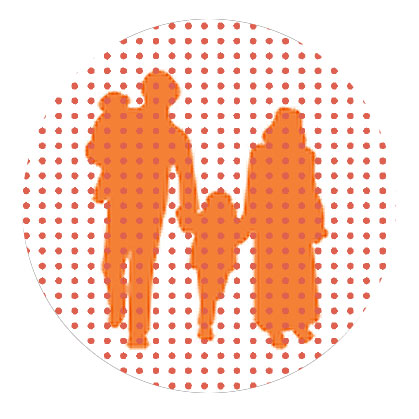It’s Not an Emergency

When we view everything as a disaster, our systems get out of whack

M
ommy! Help! I’m stuck!!!
The job of the sympathetic nervous system is to mobilize our bodies to act with speed and strength. The SNS ensures that we’ll have enough energy to save ourselves — and others — when emergencies occur. Fortunately, we rarely require the full force of our emergency resources — yet, many of us use far more than is needed on a regular basis.
A Life of Catastrophe
My parents were both very dramatic, so growing up, I thought life was just one disaster after another. If I spilled some juice at the table then — oh boy — it was a crazy scene, with Mom screaming at the top of her lungs about how careless I was and how money doesn’t grow on trees and all that stuff. Fortunately my father wasn’t around that much, but if he happened to be home when one of us showed up with a poor grade on some homework, he’d scream so loud I was sure all the neighbors could hear! Everything was an emergency or a disaster. It wasn’t until I got married and saw how my wife reacted to things that I learned not to “sweat the small stuff.”
Although not every family is quite this intense, there are certainly many people who pour a lot of emergency chemistry into ordinary daily events. When children grow up with parents who overreact, they actually learn to deploy too much adrenaline and cortisol for simple tasks. These powerful chemicals are great when we need them, but when overused, they tax our bodies, leaving us vulnerable to serious disease. So how much is enough?
Measured Reactions
The sympathetic nervous system mobilizes us for action — the more action required, the more activation of the nervous system needed. At the low end, we need just a little bit of energy to get ourselves out of bed in the morning. An alarm clock can provide enough shock to the system to get us to open our eyes and start moving. At the high end — the point at which we are facing life and death situations — we need a lot of mobilization. We must be at our strongest (to push through doors or subdue an attacker), fastest (to run for our lives), and loudest (to scream for help). We can imagine a scale of mobilization running from ten to one, where ten is the maximum amount of energy we need in our bodies to carry out the required tasks, illustrating the amount of necessary sympathetic nervous system activity by using the following examples:
10: Someone is attacking you physically — you need maximum physical energy for screaming, pushing, and running.
9: You see smoke in the kitchen — you need to be alert, find the source, take action, open the windows, and shout for help.
8: As you’re cutting vegetables, you accidentally slice deeply into your finger, and blood is spurting — you need to put pressure on the wound, call for help, and get to the hospital.
7: You’re in the car, stopped at a light, when the car behind you slams into the back of your vehicle. You feel a jolt, you don’t know if your passengers are all right or if you are — you need to investigate and take action.
6: Two kids are fighting, and you hear a piercing scream — you need to investigate and possibly address an injury.
5: You walk into the kitchen to find your chicken soup boiling over, all over the stove and onto the floor — you’ll have to move quickly to clean it all up.
4: You’re outside with the kids when the skies open up, and there is a sudden downpour — you’ll need to move fast to gather everyone and run for cover.
3: You discover the freezer has been off, and everything is defrosted — you’ll have to empty the freezer and deal with all your frozen goods.
2: Your child has spilled juice all over the table — you’ll have to clear and clean the table.
1: Your alarm signals that it’s time to get up — you’ll have to drag yourself out of bed.
So as not to overtax your nervous system or act in a way that will teach your children an emergency-based response to life, use an imaginary dial on the side of your body: Simply turn the dial down to the appropriate setting for the amount of physical energy you will need in your system in order to deal with the issue at hand.
(Originally featured in Family First, Issue 815)
Oops! We could not locate your form.




